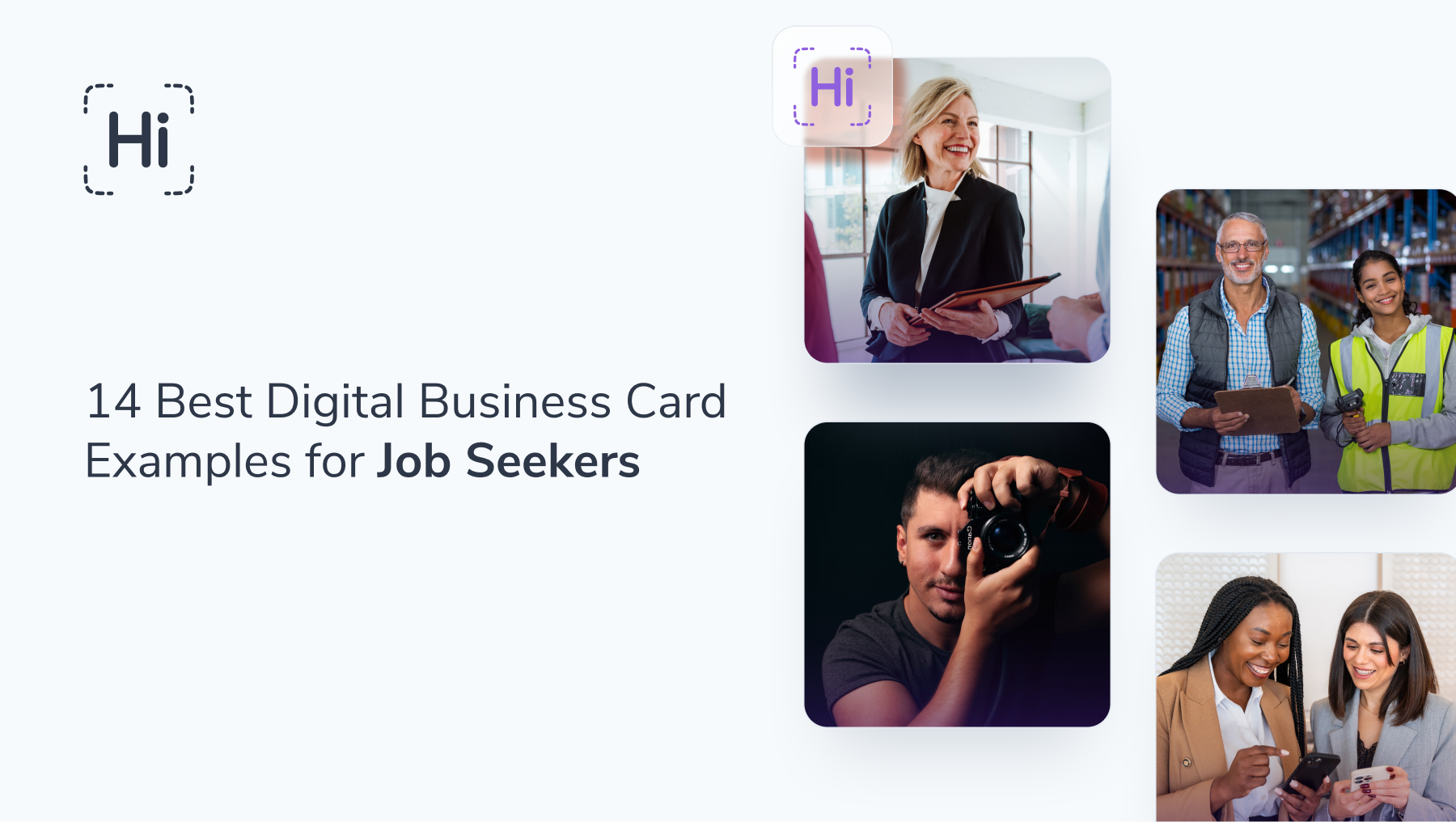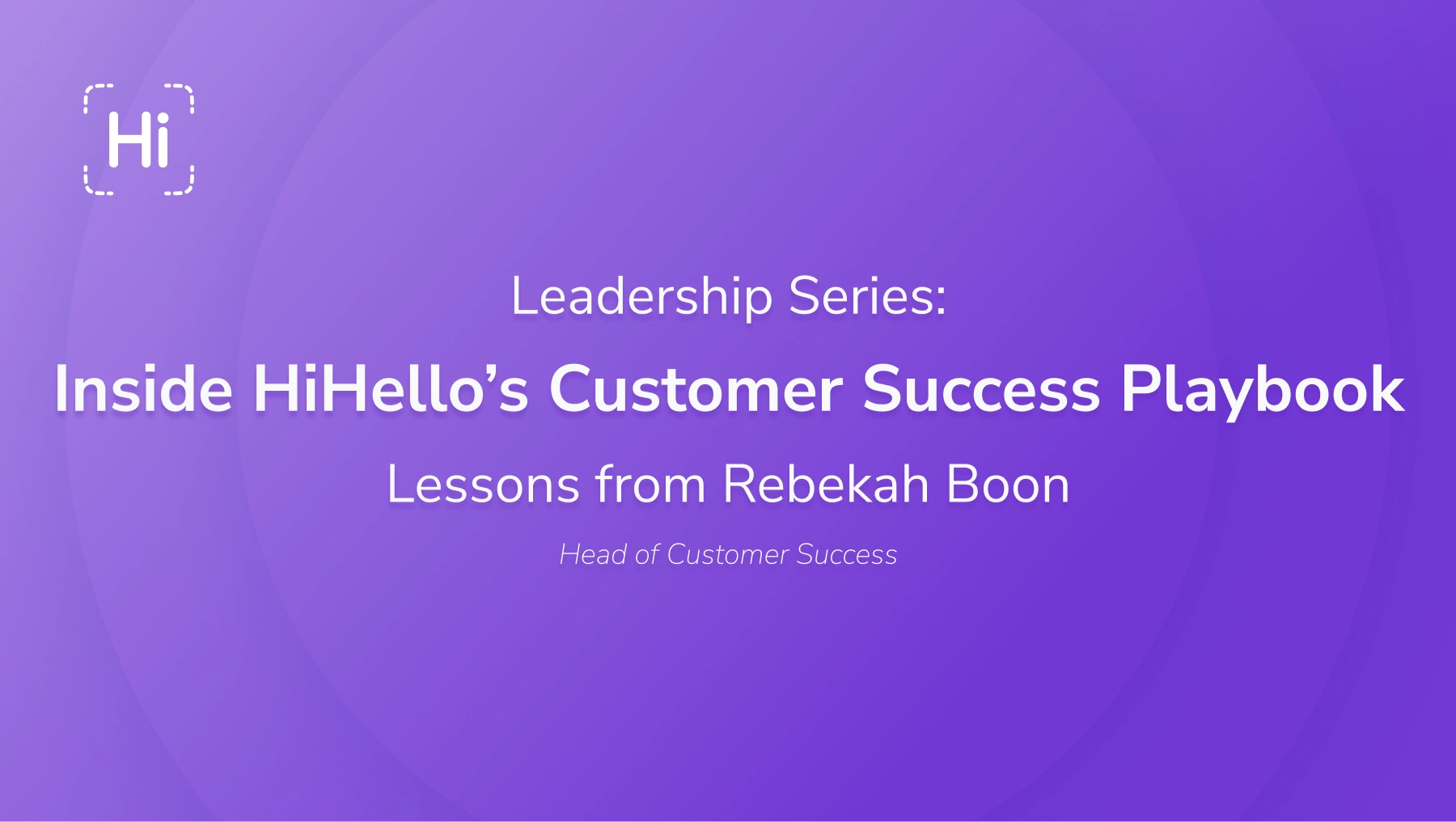It’s no secret that the job market has shifted dramatically in recent years. From mass layoffs to the rise of remote work and AI-driven hiring tools, job seekers today face both challenges and opportunities.
Before I joined HiHello, I spent years as a recruiter. On a typical day, I would interview 10+ candidates. I hate to admit it, but after so many conversations, the names and faces blurred together. The candidates who stood out were the ones who followed up.
Back then, that usually meant a handwritten thank-you note, a small gesture that made a big difference. If digital business cards had been around, I would’ve remembered even more candidates. Imagine getting a follow-up that includes a headshot, key accomplishments, and a portfolio link all in one place.
That’s the power of a digital business card. It helps recruiters remember who you are, makes following up effortless, and shows you’re serious about the opportunity.
What should I put on my digital business card?
No matter your role, every job seeker’s digital card should include:
- Professional headshot (or even a short video)
- Full name (with pronouns, if you’d like)
- Job title (current, target, or general)
- Company
- Headline (your quick elevator pitch)
- Phone number (optional, but helpful)
- Location (address, city, or “remote”)
💡 Pro tip: Add links to LinkedIn, GitHub, a portfolio, or past projects. Recruiters love to see proof of your work.
Examples of Business Cards for Job Seekers
Aside from the information above, there are a number of other fields you can fill out on your HiHello digital business cards. For your jobseeker card, only fill out the fields that are relevant to you and your career. Here are a few examples of specific cards to make.
1. Engineering Business Cards
If you’re an engineer or developer, you’re going to want your LinkedIn and Github on your digital business card. These will help recruiters and hiring managers get a full picture view of your education and job history, and they’ll be able to see real-life examples of your code. If you’re a web developer, also consider adding your website or portfolio to the “Website” field.
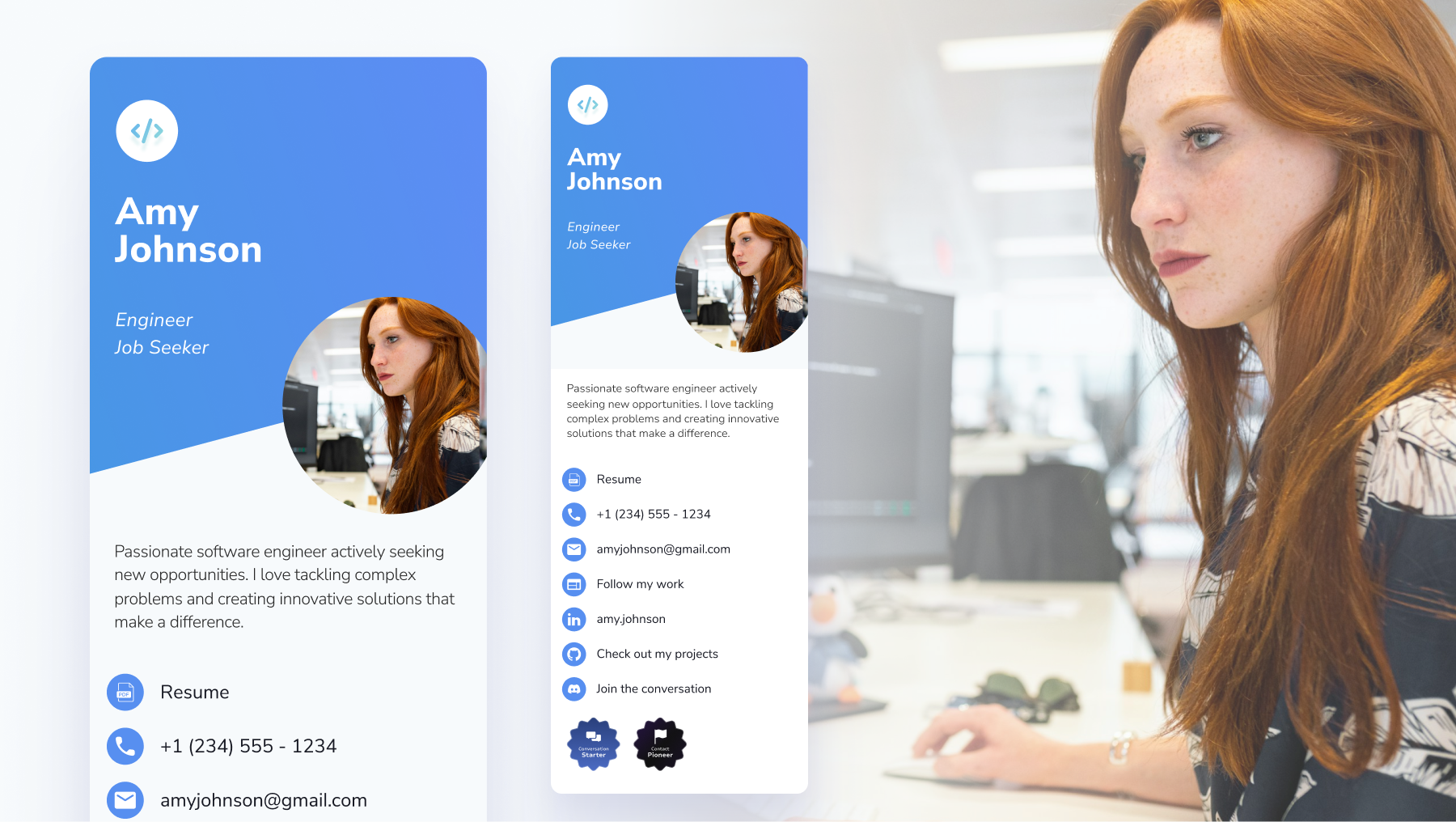
2. Sales & Marketing Business Cards
If you’re in sales or marketing, you should include links to your professional background, your work, and some key results on your digital business card. Adding your LinkedIn to your card is a no-brainer, so make sure your LinkedIn is up-to-date! If you have a portfolio, including it in the “Website” field is a great way to showcase your work.
If you think your Twitter could help you land your next gig, it’s completely acceptable to include that as well. (However, if you tend to Tweet, Like, or Retweet extremely controversial content, it’s best to leave your social media off your card, at least during the interview process.)

3. Content Creator & Social Media Business Cards
Whether you’re a copywriter, content strategist, social media manager, videographer, or even an influencer, this applies to you. Put your portfolio in the “Website” (here is a good guide to learn how to make a portfolio).
You’re going to want to show off all your content and make your digital business card stand out. Add your social media profiles—like Twitter, Instagram, and YouTube—to your card. (For these types of roles, being a little edgy on social media is OK, but it’s a good idea to go through your social media before job hunting and make sure you’re not embarrassed by anything a potential hiring manager would see.)
If creating video content is in your skillset, you should feature one of your videos on your cards. Upload your video to YouTube, Vimeo, or Brightcove, and then copy the link to the video and paste it in one of the video fields on your card. To feature the video into your card, switch the “Feature” toggle to “on.” This will embed your video in your card, so people can see it without having to open the link.
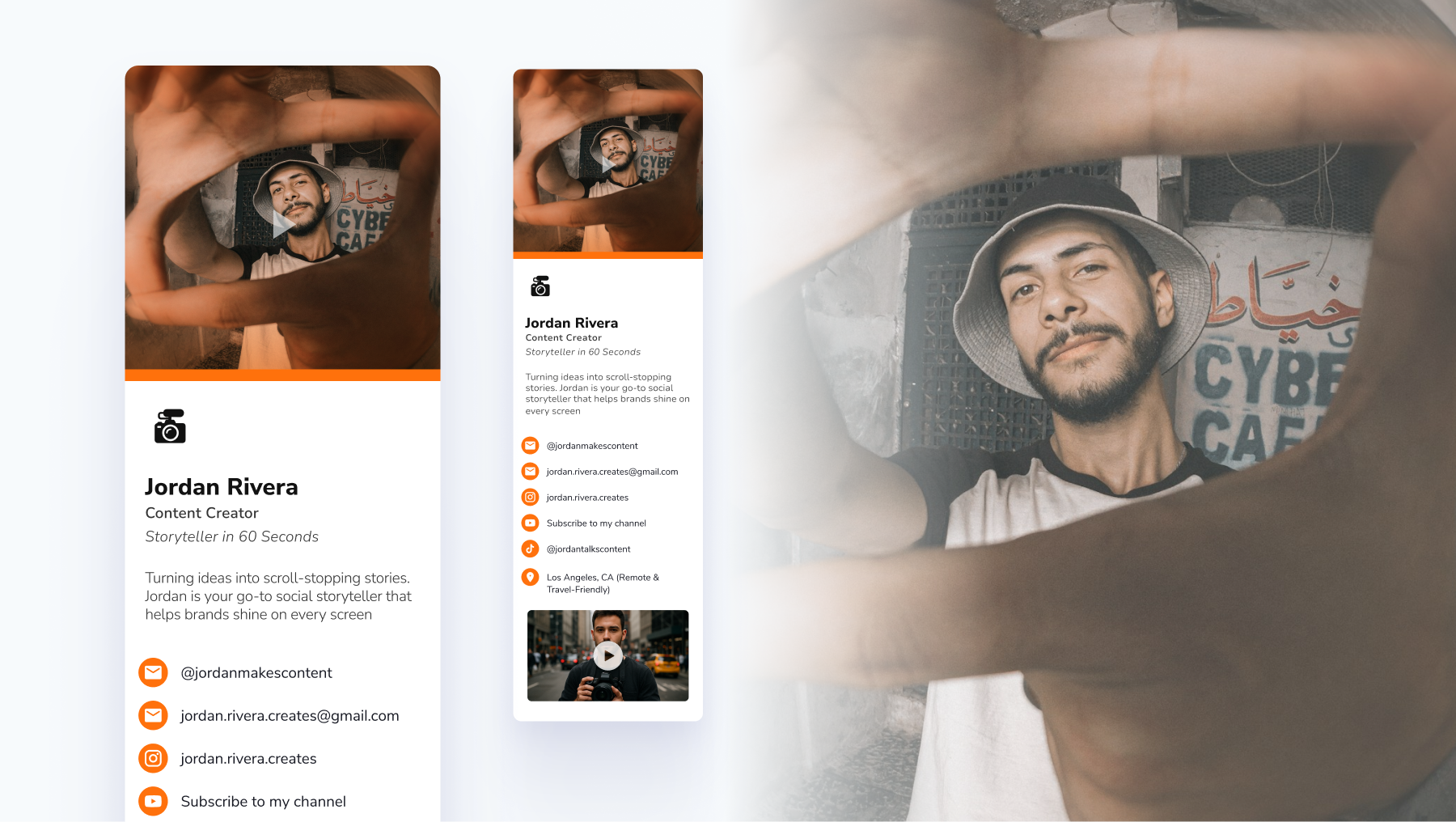
4. Product Manager Business Cards
As a product manager, you’ll need your education and experience on hand, so put your LinkedIn on your digital business card. Recruiters and hiring teams will also want to see examples of past work, so link to products or features you’ve worked on in the “Link” field. (Bonus points if you have a portfolio of past work!) If you’re a Technical Product Manager, you may want to add your Github to your business card as well.
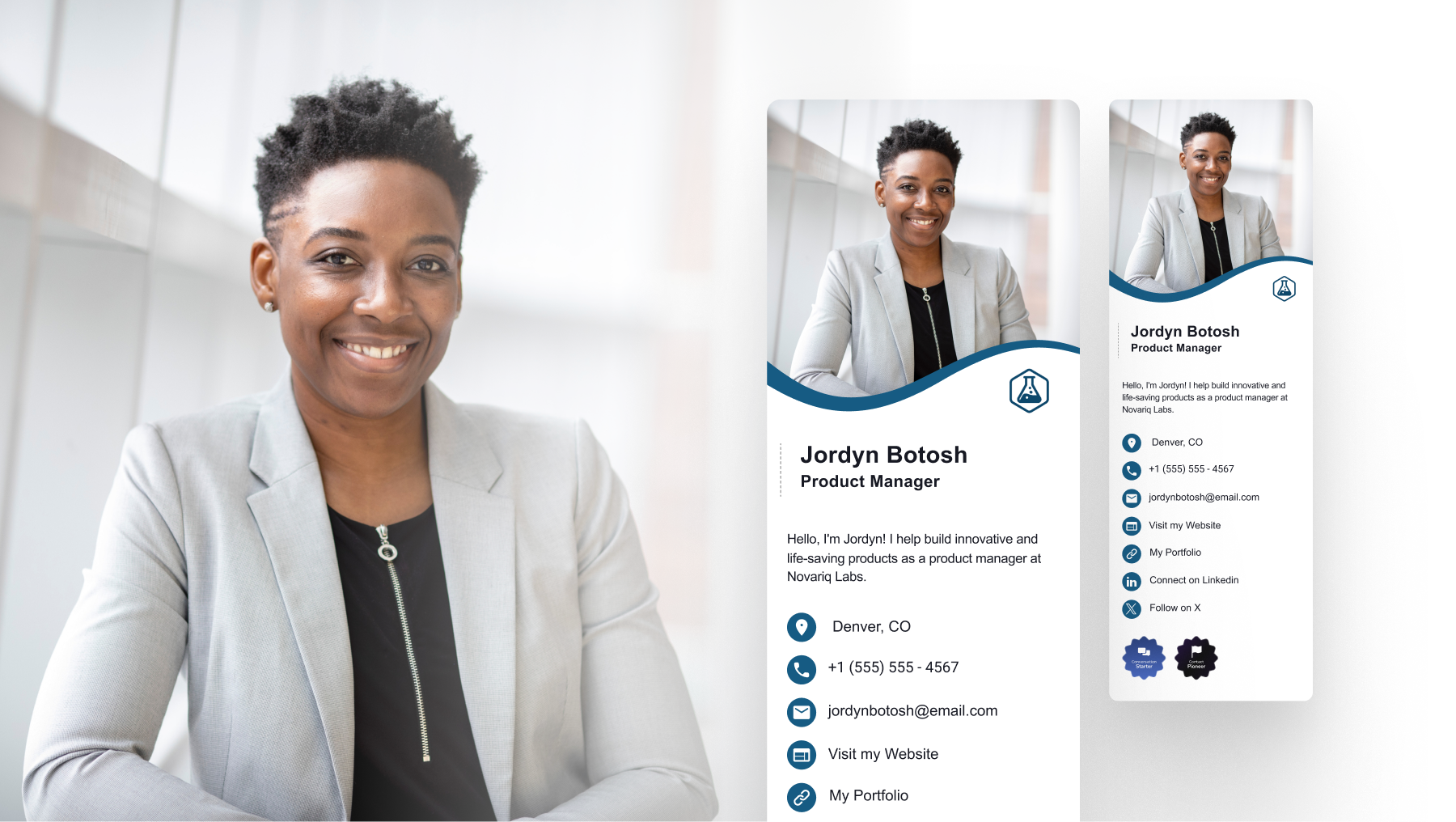
5. Designer Business Cards
For designers, putting the link to your portfolio on your digital business card is a must. If you don’t have a portfolio, include links to examples of past work—like a website you built, an app you designed, or social media content you created.
In addition, adding your LinkedIn to your card will allow a potential employer to see your full work history. Instagram is also a unique opportunity to easily showcase your work—consider making an Instagram account for your designs, and then add that to the “Instagram” field. Don’t be afraid to add a custom logo to your card if you have one!
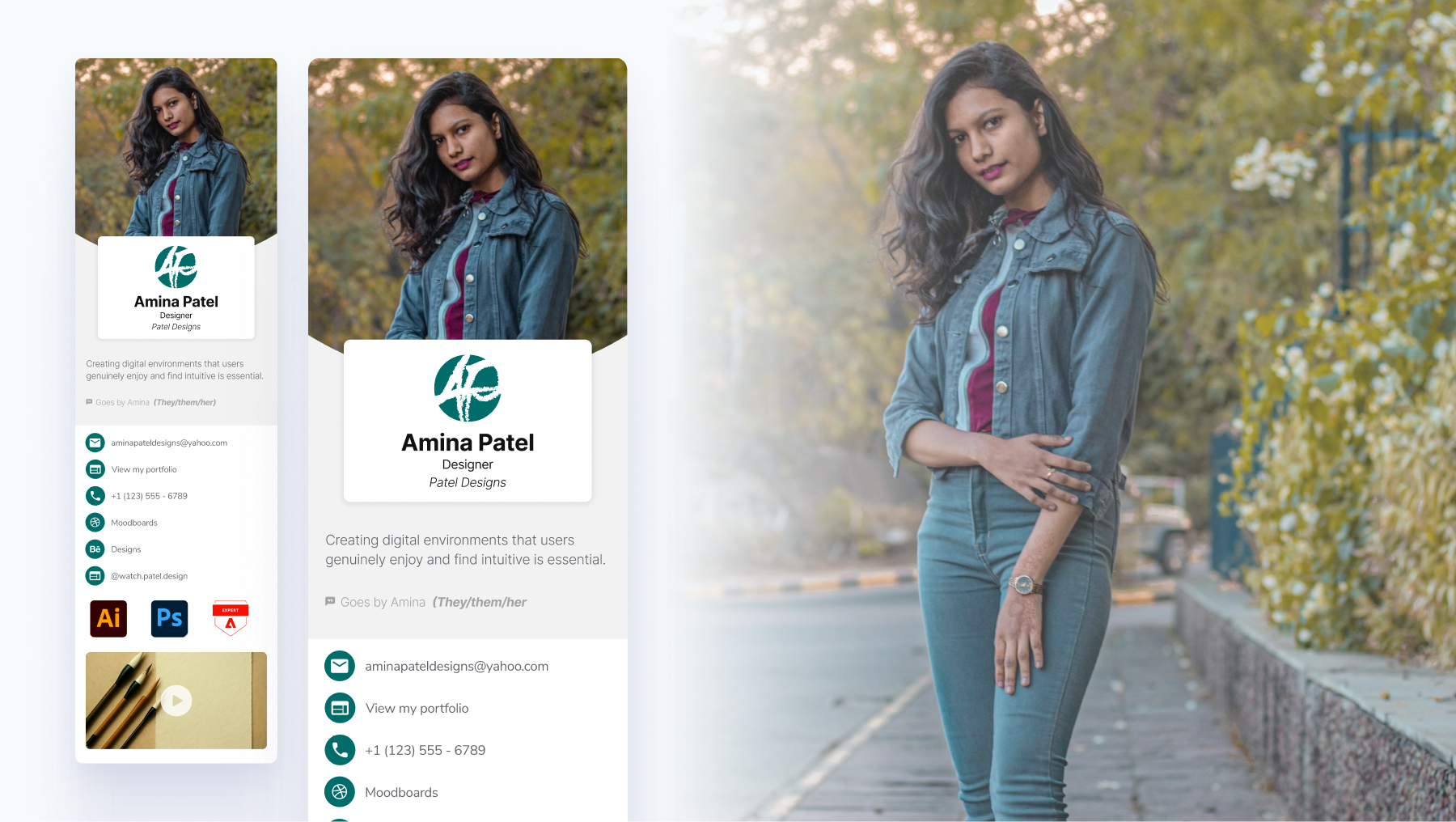
6. Customer Success and Customer Service Business Cards
If you’re in customer success or customer service, a great thing to highlight on your business card is examples of reviews from customers. If a customer or client left you a great review on Glassdoor, Yelp, or other review sites, add the link to your card! You’ll also want to include your LinkedIn on your card so future employers can see your work history.

7. Human Resources Business Cards
Human resources is all about bridging the gap between company and employee. If your company has a booming culture, link to your Glassdoor page, or the careers or culture page of your company’s website (here’s ours, for example). You’ll also want to add any accreditations you may have to your name, like SHRM or HRCI.

8. Lawyer
If you’re in the legal field, you’ll want to create a clean and professional business card. You’ll want to include your legal name, educational background, and the locations where you are licensed to practice law. It’s also important to add any accreditations to your name that you might have.
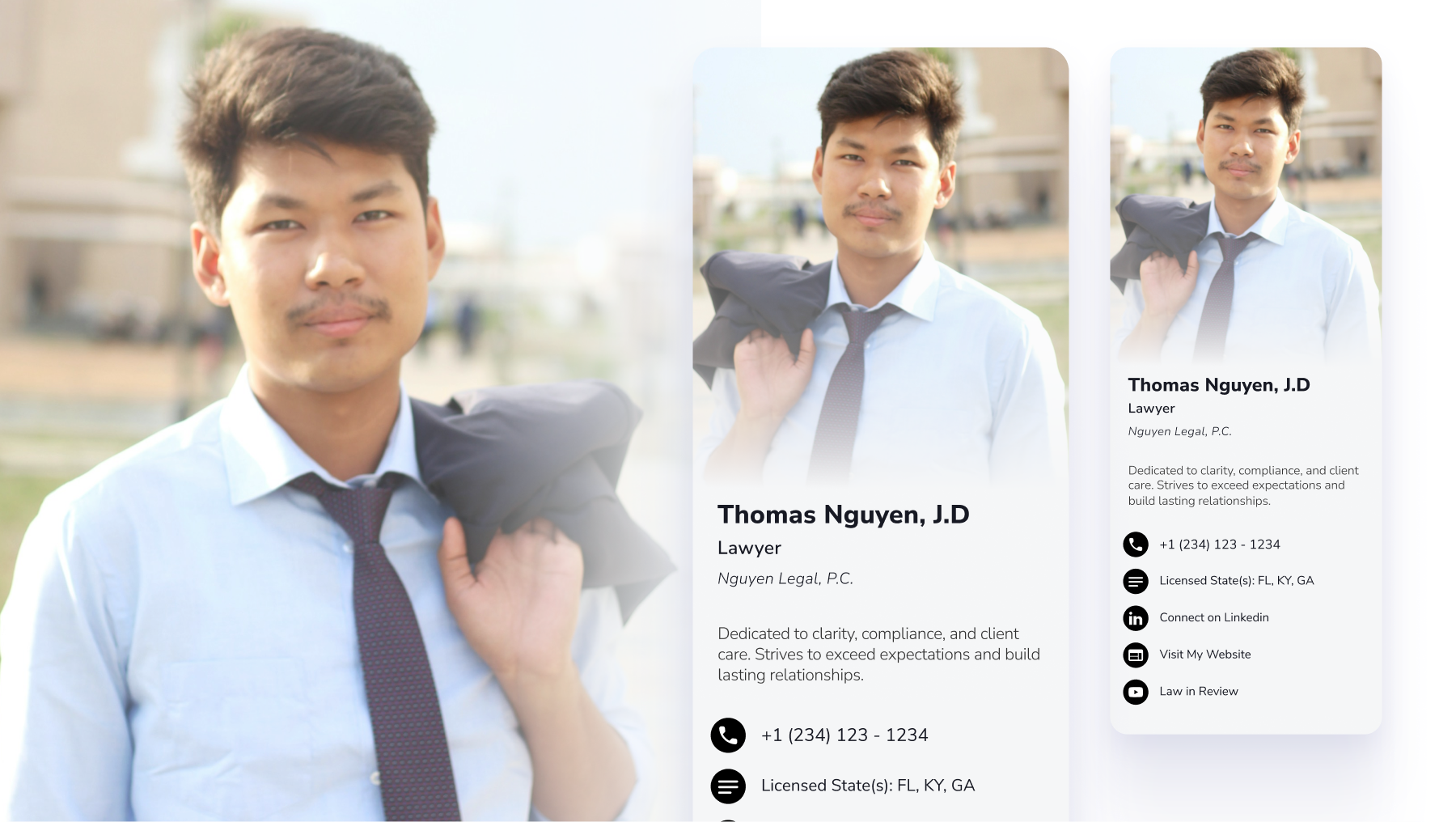
9. Real Estate Agent
Being in real estate requires you to be an excellent salesperson, and that’s no different in the job search. Your digital business card is your best marketing tool. You should include links to your professional background, like LinkedIn or a personal website if you have one. It’s also important to include any essential regulatory information like license number and type of license and any necessary badges.
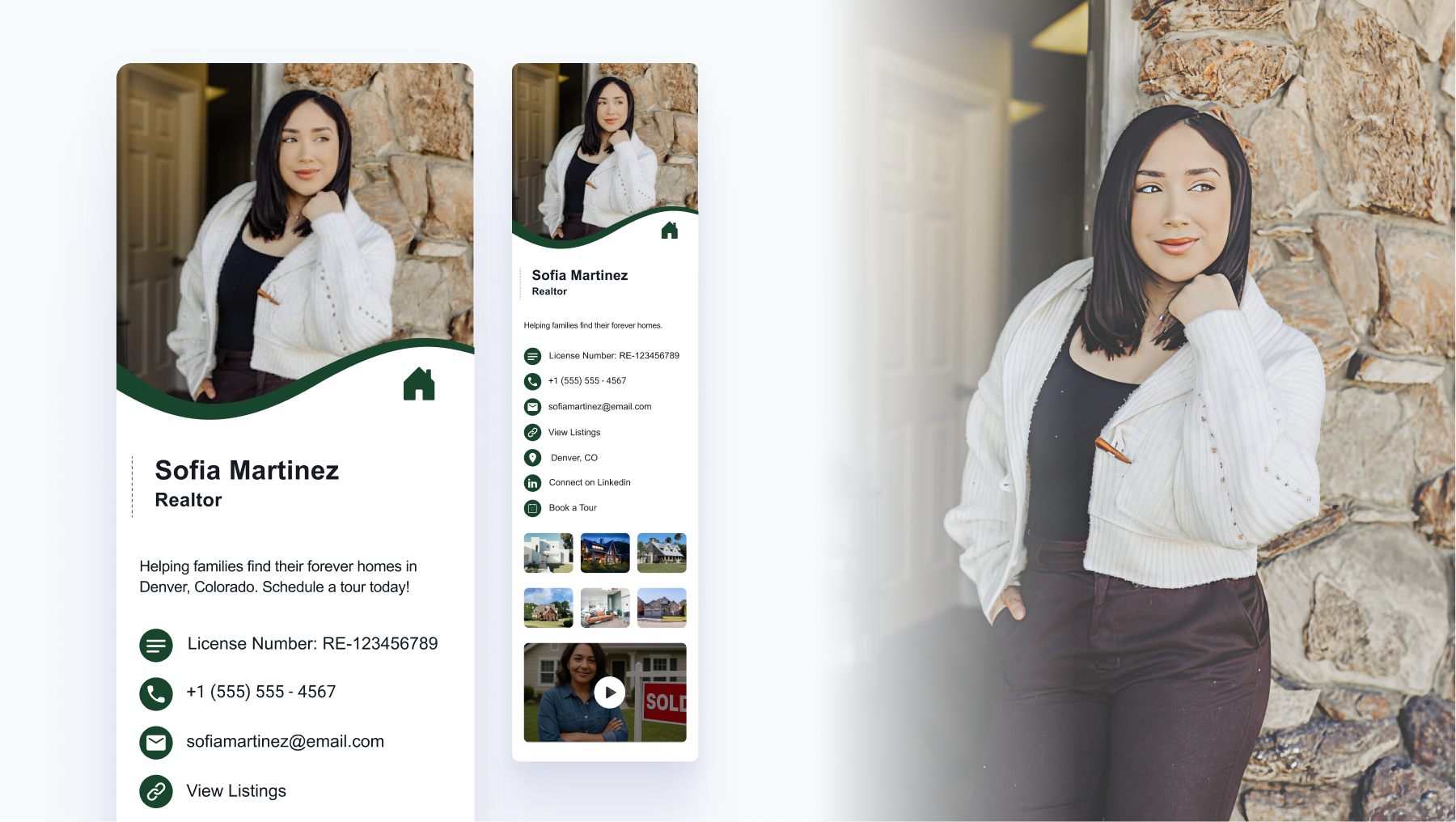
10. Healthcare Professional Business Cards
Whether you’re a doctor, nurse, or therapist, credentials should be front and center. Start with your full name, title, and certifications (MD, RN, LCSW, etc.). Add LinkedIn for work history, and if relevant, link to published research or articles. Uploading a PDF of your CV or resume to your card can make it easy for hospitals or clinics to access your full background.

11. Recent College Graduate Business Cards
With the school year just finishing up, there are plenty of new grads currently on the job market. If you don’t have much (or any) professional work experience, you’ll want to focus on your educational accomplishments. In your title, put the generic field you’re looking to get into, like “Sales” or “Engineering”. In your headline, include your school name, the year you graduated, and your degree(s). Have an awesome GPA? Include that in there too! You’ll want to link to anything that shows your accomplishments—LinkedIn is a great place to start. You can also link to any projects you may have worked on during your undergraduate career.

12. Teachers & Educators Business Cards
For educators, your qualifications and teaching philosophy can set you apart. Include your subject area, grade level, and certifications (like state teaching licenses). Add LinkedIn to showcase experience, and link to lesson plan samples, classroom projects, or even a professional teaching portfolio website. If you’ve presented at conferences or written education blogs, add those links as well; it shows your commitment to the field.
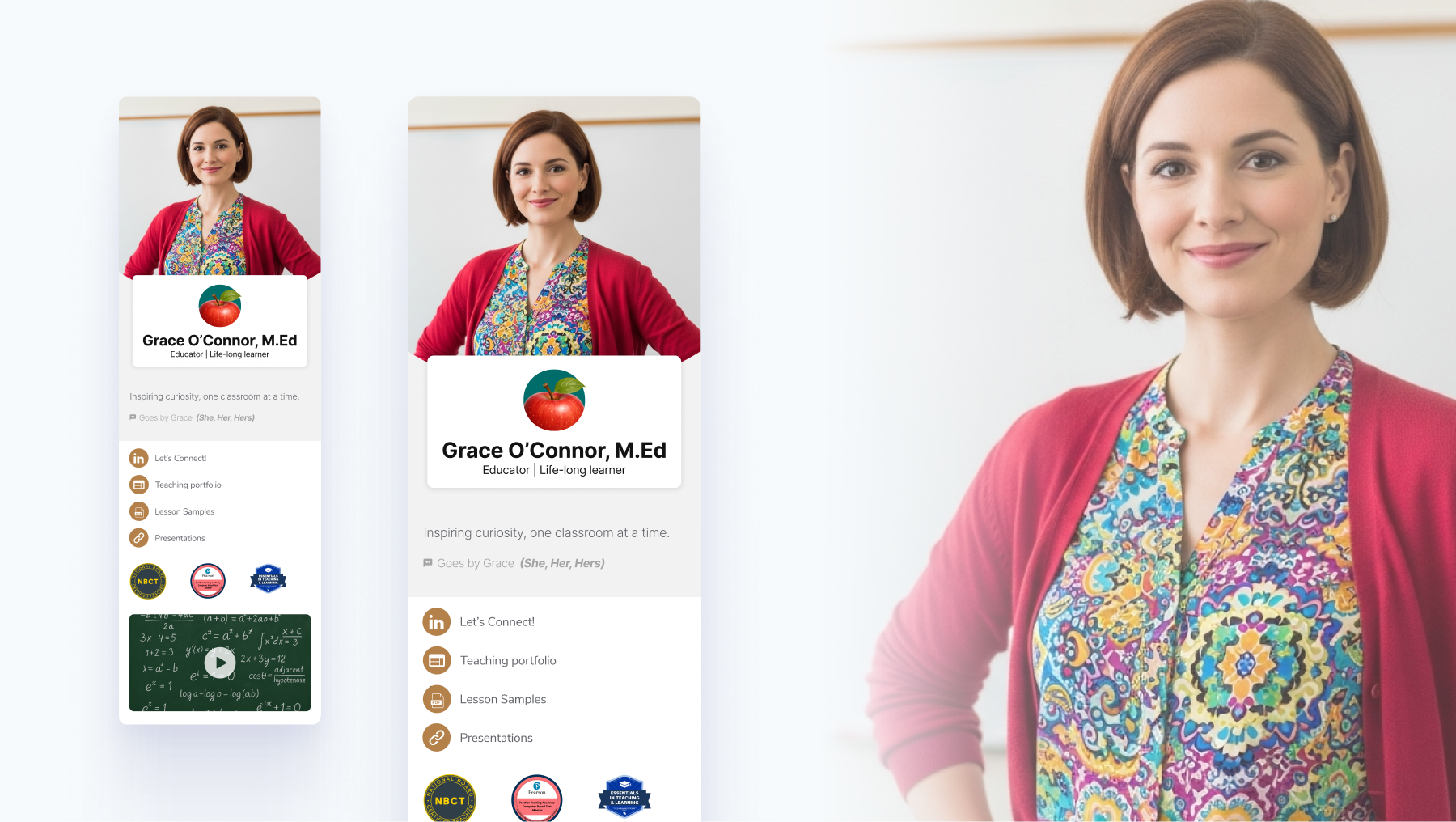
13. Executives & C-Suite Business Cards
Executives should use their cards to reinforce thought leadership. Include a professional headshot, your role (CEO, CFO, VP of Strategy), and links to articles you’ve published, panels you’ve spoken on, or press mentions. If you have a personal website or a book you’ve authored, link it. Adding a mission statement or tagline in your headline can also make your leadership brand memorable.

14. Nonprofit Professional Business Cards
Nonprofit professionals often stand out by connecting their work to impact. Highlight your role (Fundraising Manager, Community Organizer), link to campaigns you’ve led, and include donation or event pages if they’re public. Testimonials or media coverage of your nonprofit can also make your card more compelling. Adding your LinkedIn profile helps recruiters see your mix of organizational and community experience.
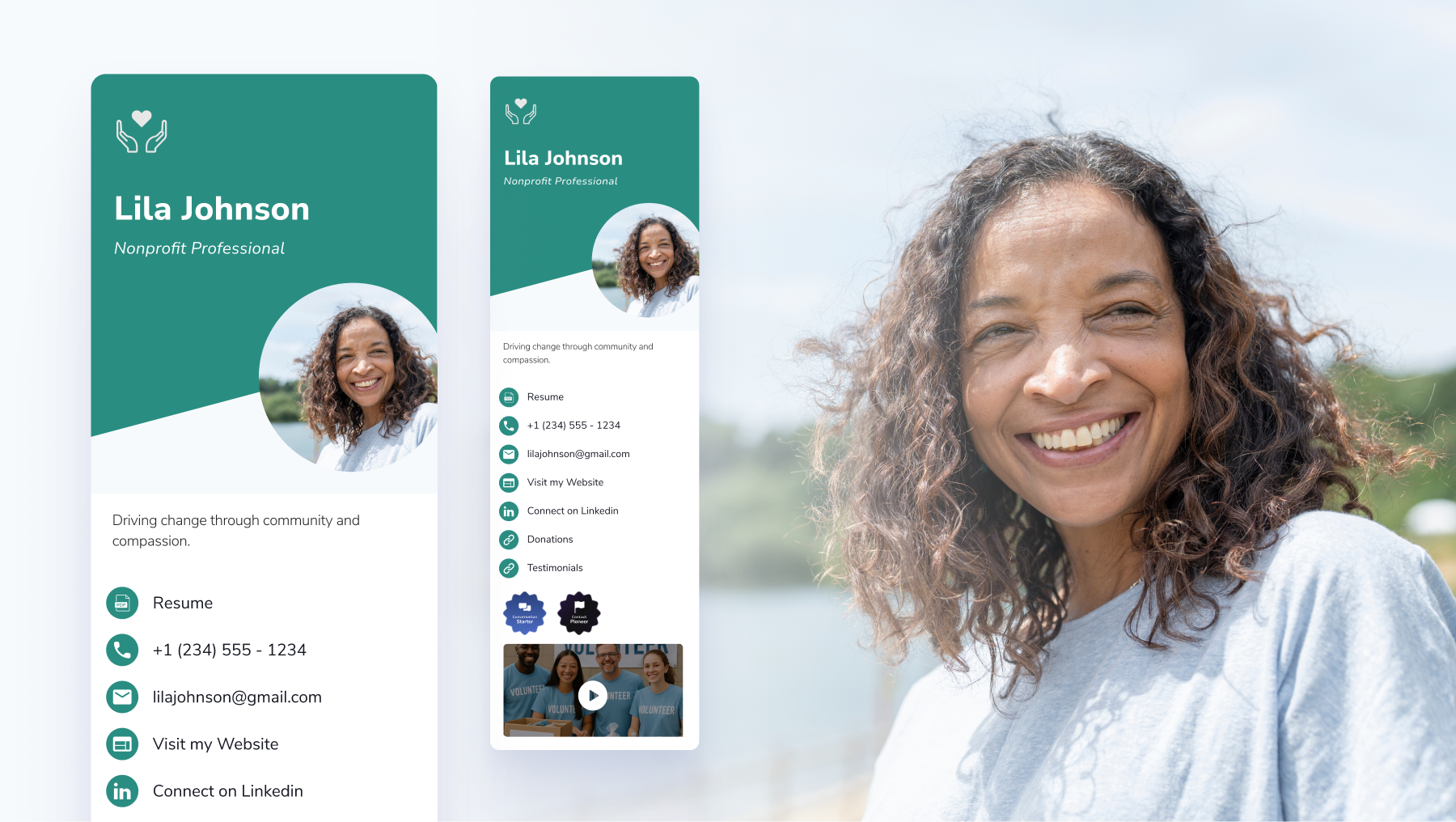
Job hunting can be time-consuming, stressful, and exhausting. Sometimes it can take a few weeks, for others it can take months on end. (Trust me, I know from experience!) As a former recruiter, my best piece of advice is to be prepared, professional, and always have evidence of your work, whether it’s designs, analytics, a product, or anything else you may have worked on. Being able to include some of these elements on your digital business card will help you stand out to any employer.
Get started with HiHello
HiHello is a free end-to-end contact manager designed to help you curate and grow your network. If you’re ready to make the change from paper business cards to digital, sign up for HiHello for free on iOS, Android, or desktop.
Learn more about digital business cards in our guide to digital business cards.
FAQs about business cards for job seekers
Do job seekers still need business cards?
Yes. Digital business cards are even more relevant now. They show initiative, make networking seamless, and help you stand out.
What’s the best way to share a business card in an interview?
Follow up with a quick thank-you email that includes your card link. Or share it instantly with a QR code if you’re in person.
Should I put my portfolio on my business card?
Absolutely. Portfolios give recruiters instant access to your skills and projects.

